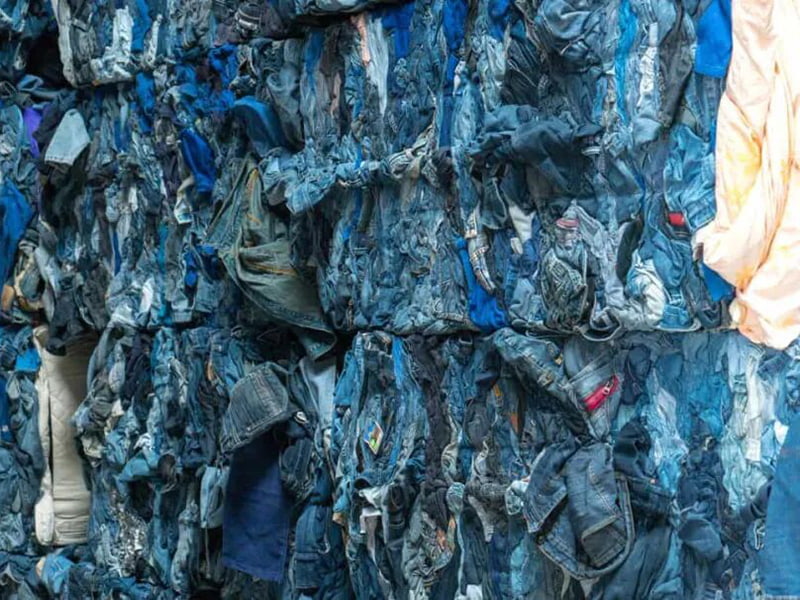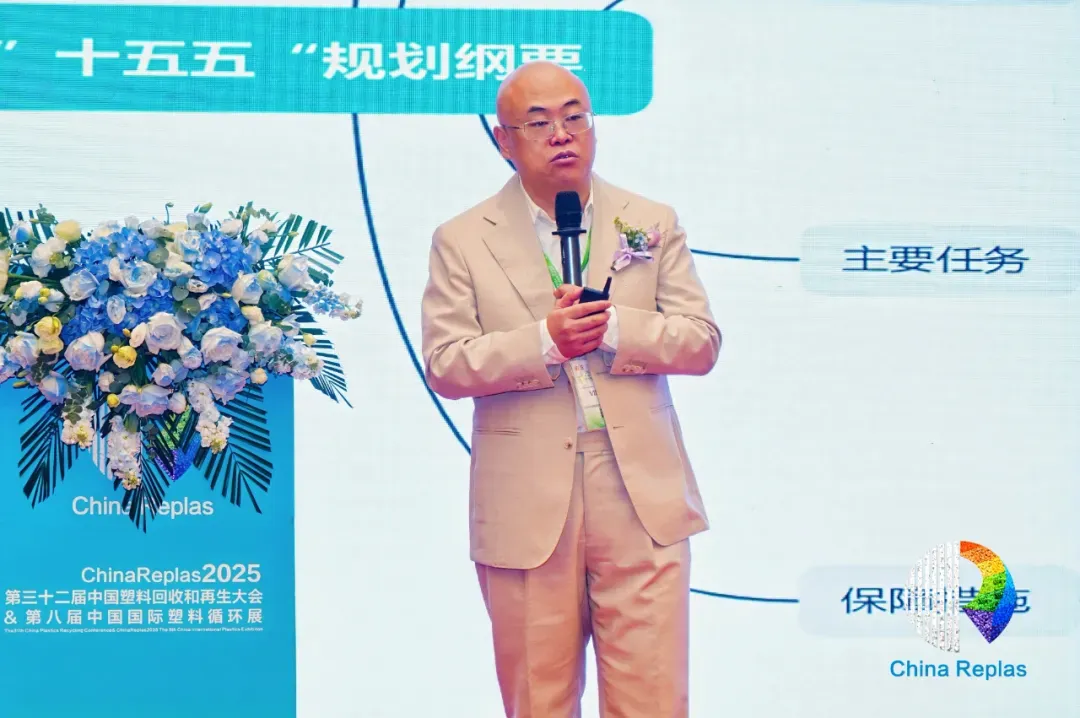Product Consultation
Your email address will not be published. Required fields are marked *

From Raw Materials to Market: A Professional Guide to Super White Non-Woven Staple Fibers
Dec 01,2025
Warning of a major reshuffle! The plastic recycling industry is nearing its "suffocation point"
Dec 04,2025
Depth丨The closed-loop revolution of textiles: T2T opens a new era of high-value circulation
Nov 28,2025Amid the continuous upgrading of the modern textile industry, the functionalization and high-performance development of fiber materials have become key development directions. Among them, hollow conjugated fibers, a new type of chemical fiber with a unique structure and excellent properties, are gradually gaining a significant position in the apparel, home textile, and industrial sectors due to their lightweight, thermal, breathable, and resilient properties. With the growing trend towards green fibers and functional fabrics, hollow conjugated fibers are becoming a focus of R&D and market attention in the textile industry.
I. Structural Characteristics and Forming Principles of Hollow Conjugated Fibers
Hollow conjugated fibers are bicomponent or multicomponent composite fibers produced through a combination of specialized spinneret design and composite spinning technology. They possess a hollow structure within their cross-section and form a spiral crimp between the different component fibers, giving the fibers a natural elasticity and bulk. The "conjugated" designation refers to the fiber's composite structure of two or more polymer materials with varying shrinkage properties. This asymmetric structure automatically curls during post-processing and heat setting, forming a three-dimensional crimped structure.
The core technology behind this fiber lies in controlling the fiber's crimp and hollowness. The crimped structure enhances the fiber's resilience and volume, while the hollow core significantly reduces its weight, improving warmth and breathability. By combining different polyester components and fine-tuning the spinning process, hollow conjugated fibers achieve an ideal balance of softness, gloss, and feel, balancing functionality and comfort.

II. Performance Advantages of Hollow Conjugated Fibers
Hollow conjugated fibers have attracted widespread attention due to their multiple advantages, including lightweight, thermal insulation, breathability, and elasticity. The hollow core within the fiber allows air to be trapped, creating a natural insulation layer, significantly enhancing warmth without increasing weight. Compared to traditional solid polyester fibers, hollow conjugated fibers have a lower density and a greater sense of volume, giving fabrics a fluffier appearance and a softer feel.
The fibers' conjugated crimp structure also provides excellent resilience and compression resistance. In filling applications, they quickly return to their original shape even after prolonged compression, maintaining excellent elasticity and support. The three-dimensional crimping of the fibers also increases internal voids, facilitating air circulation and achieving both breathability and moisture absorption.
Hollow conjugated fibers also exhibit significant advantages in dyeing and processing performance. The microstructure on the fiber surface enhances dye absorption, resulting in brighter, more fading-resistant fabrics. Through post-finishing processes, they can also achieve various functional treatments such as antibacterial, antistatic, and flame retardant properties, making them more in line with modern consumer demand for high-performance textiles.
III. Expanding Applications of Hollow Conjugated Fibers
With the accelerating development of functional fibers, the application range of hollow conjugated fibers continues to expand. In the apparel sector, they are widely used in thermal outerwear, down alternatives, sportswear, and functional underwear. Its light, fluffy, warm, and breathable properties make it more comfortable and natural to wear, while also reducing the overall weight of clothing, meeting the demand for lightweighting in outdoor and sportswear products.
In the home textile industry, hollow conjugated fibers are widely used in quilt cores, pillow cores, cushions, and sofa fillings. The three-dimensional crimping of the fiber structure imparts excellent loft and long-term durability to the filling, maintaining soft support while offering excellent breathability and enhancing comfort. The hollow structure provides high resilience, allowing products to retain their original shape even after extended use.

Hollow conjugated fibers are also important applications in the industrial and environmental fields. Their excellent sound absorption and thermal insulation properties make them uniquely valuable in automotive interiors, insulation materials, and air filtration. Furthermore, hollow conjugated fibers made from recycled polyester align with the concept of sustainable development and promote the textile industry's transition to environmentally friendly and low-carbon development.
IV. Innovation and Development of Hollow Conjugated Fibers in the Context of Green and Environmental Protection
Amid the global advocacy for sustainable textiles, the research and development of hollow conjugated fibers is moving towards a balance between environmental protection and high performance. Hollow conjugated fibers made from recycled polyester (rPET) can effectively reduce the consumption of petrochemical resources and lower carbon emissions, achieving resource recycling. Through improvements in spinning and post-processing processes, the new generation of hollow conjugated fibers has achieved comprehensive improvements in softness, stability, and environmental performance.
At the same time, with the rapid rise of smart fibers and functional textiles, hollow conjugated fibers are being combined with new materials technologies such as nanotechnology, antimicrobial coatings, and phase change thermoregulation to impart additional functionality to textiles. For example, by adding functional masterbatches to the fibers, they can achieve self-temperature regulation, moisture wicking, and UV resistance, enhancing both comfort and a sense of technology.
This multifunctional composite development has made hollow conjugated fibers not only a key material in the traditional textile industry, but also a key foundational material for smart apparel, home health products, and even high-end industrial applications.
V. Future Development Prospects and Industry Trends
With continued innovation in textile material technology, there remains ample room for optimizing the performance and expanding the application of hollow conjugated fibers. Future development will focus on three key areas: first, enhancing the functional diversity of fibers and achieving more high-value-added properties through structural manipulation; second, strengthening green manufacturing and recycling, driving the increased use of recycled materials; and third, leveraging intelligent manufacturing technologies to improve product stability and production efficiency.
Global demand for lightweight, warm, and sustainable textiles continues to grow. Hollow conjugated fibers, with their unique structural and performance advantages, will demonstrate their value in a wider range of high-end textile applications. From home textiles to functional apparel, from industrial materials to new environmentally friendly products, they are becoming a crucial bridge connecting comfort and a green future.
The emergence of hollow conjugated fibers is the result of the fusion of chemical fiber technology and textile innovation. They not only meet consumer demand for comfort, lightness, and warmth, but also align with the industry's trend toward green, environmentally friendly, and diversified functionality. With continuous technological advancements and market expansion, hollow conjugated fibers are poised to play an even more important role in the textile industry, ushering in a new era of high-performance and sustainable textiles.

Understanding Polyester Staple Fiber: Properties, Production, and Applications
2025-10-15
Wang Wang: From the 14th Five-Year Plan to the 15th Five-Year Plan, the plastics comprehensive utilization industry has achieved leaps and bounds.
2025-10-29Your email address will not be published. Required fields are marked *
Focusing to the research and production of differentiated fiber. Applying recycle-material processing scientifically.
Zhulinjizhen, Xinfeng Town, Jiaxing City, Zhejiang Province
Copyright @ 2023 Jiaxing Fuda Chemical Fiber Factory All rights reserved
Polyester Staple Fiber Manufacturers
Friendship link - Anhui Fulin Environmental Protection Technology Co., Ltd.:https://www.ahflhb.com
